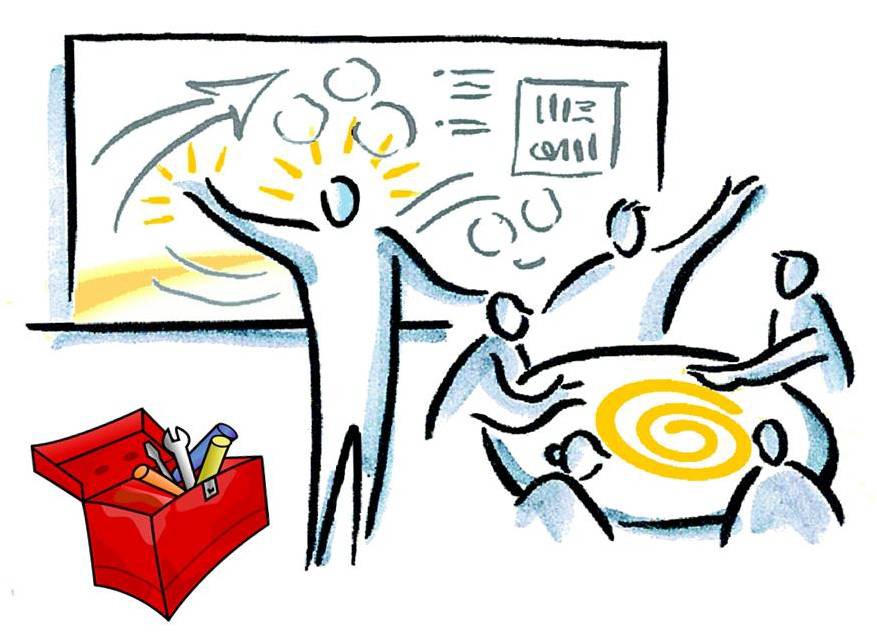Getting Your Board on Board with Participatory Grantmaking
When I started talking to people in the UK funding sector about my fellowship, one of the questions that got brought up, again and again, was how to get boards and senior managers on board with participatory approaches. As the majority of foundations I met were set up as participatory funders this question was quite difficult for them to respond to. The tension between boards and approach was totally alien to them as their boards and senior management had been the instigators and biggest champions of participatory approaches.
For the few more traditional foundations I met with, they were likely to have only small pockets of participatory grantmaking within their portfolios either through one-off programs of funding or through testing smaller aspects of participation within their work, such as having a layperson on their decision making panels or recruiting staff from the communities they were trying to serve.
It was clear that there can be quite a bit of nervousness around participatory grantmaking, especially if you are moving from a more traditional form of grantmaking. Through my conversations there seems to be a few core concerns when it comes to trialing and embedding participatory approaches:
That participatory grantmaking takes much longer and is much more expensive to deliver than traditional grantmaking.
There is currently no research to suggest that participatory grantmaking does take longer than traditional grantmaking, and there are those who argue that once the fundamentals are in place it is a similarly timed process. But this is a difficult question as it is obviously dependant on what you are comparing it to. You would need to understand the amount of time that traditionally goes into a foundation’s assessment, relationship building, outreach, and due diligence processes and these are different from foundation to foundation so it’s difficult to give a definitive answer. For some foundations, participatory grantmaking will take much longer and/or require more operational costs and staff time; if you only have one or two staff members, you need to bring in external support or you are delivering urgent response funding. For others, it could actually take less time as assessment and decisions can be done collectively with the group on the day rather than by one person over a prolonged period.
If you are developing a participatory process it can be designed and delivered around required timelines meaning that often participatory grantmaking can be as long or as short as required. If you are doing participatory grantmaking thoroughly, often what takes the time is the relationship building, supporting the decision-makers, organizing the logistics of the event, and developing the facilitation skills needed. The increased costs usually come through the logistics if you are bringing people together e.g. room hire, food, payment, travel, accommodation. If necessary there might also be costs if you require external facilitation support.
However, there are so many different ways of doing participatory grantmaking — community votes, strategic program co-design, peer decision-makers, online deliberation, etc. all of which take different lengths of delivery time and costs so there are options and ways to embed participation that match different requirements. (To find out more about the different models of participatory grantmaking check out this blog: https://medium.com/@hannah.paterson/models-of-participatory-grant-making-254a97e41d.)
The concern that those without lived experience of an issue will no longer be needed within Foundations and that firsthand experience would be valued above and beyond both academic and work experience.
I think the premise of this thought is a little disingenuous. There are currently foundation staff up and down the country and across the world who have lived experience of a social issue. It is important to understand that you can be, and many people are, a care leaver and a funder; disabled and a funder, working-class, in recovery, have mental health issues, even be an ex-offender and a funder. What is important is that we provide recruitment and employment practices that allow a range of people from different backgrounds to thrive in our organizations. There are not two specific roles, one for those with lived experience and one without. We all have experience and knowledge from a range of different places what is important is recognizing that we can value and utilize this knowledge without a hierarchy of where this knowledge comes from. Academic knowledge or work experience shouldn’t be of more value then lived experience and vice versa. We should recognize the value in all of this and seek out new insights and opinions to help our work develop and better tackle some of the issues we are looking to solve. In the UK the 2027 project aims to diversify foundation staff by providing paid year-long roles for working-class frontline workers in foundations, it’s a great place to start recognizing and recruiting talent.
That staff do not have the skill sets to deliver participatory approaches.
Whereas a traditional approach might involve more desk-based research and analysis of written proposals, participatory approaches might require different types of skills such as event management, facilitation, active listening, and community organizing. This doesn’t mean that traditional skill sets are obsolete, but that developing and supporting skills across a range of areas or having a diversity of staff who can lead or support different aspects of delivery is an exciting opportunity for a whole team. This can be achieved through both training and development of current staff as well as recruiting staff with these specific skills and knowledge.
There is also the opportunity to bring in the skills that are required through a consultant or by supporting organizations already working this way e.g. funding Camden Giving or the Edge Fund in the UK.
There is likely to be a need to conduct some form of due diligence for applicants and reporting/grant management for grant holders, these can all be delivered through staff with these existing skills and knowledge (although there are interesting ways of doing grant management differently too). In short, there might be a skills gap within staff teams but that provides an opportunity for learning and development or to bring in others to support.
That there is a much greater risk with participatory grantmaking and that those making decisions might make the ‘wrong’ decisions.
I think there are two parts to this. The first is a legitimate concern about risk the second is a more veiled concern about giving up power.
With regards to risk, there is nothing that suggests that participatory grantmaking is more or less risky than traditional methods and for most of the grantmakers I met the due diligence conducted was pretty similar regardless of the decision-making process. For some, the timing of these checks were different, some people conducted their due diligence before applicants were sent to decision-makers, others did this afterward. There are pros and cons to both and this decision can be made based on the approach you choose to take and the level of risk you want to mitigate against. All of this can be taken into consideration when you design your approach. It is also worth bearing in mind that risk checks should be proportionate to the size of the grant, it is expected that risk checks would be less arduous for a smaller grant than a much larger one.
For many of the grantmakers I met, trustee boards reviewed the due diligence and had the opportunity to flag and question any concerns about recommended grants, they also had final sign off. The Other Foundation had only a handful of examples in their 8-year history of the board rejecting a recommendation. The main boards trusted their staff to carry out the agreed-upon checks and balances and they trusted the community to assess the merits of the proposals.
Seeing the responsibility that community members took in making funding decisions and the knowledge and insights that informed such a deep level of discussion and critique was often a real eye-opener and learning opportunity for board members to not only trust the process but its outcomes.
The second part of this is the concept of communities making the ‘wrong’ decisions. It suggests that boards make the ‘right’ decisions and I am not convinced that this is the case. Especially when I think what is more likely to happen is that the decisions are just different. Difference is good; it uncovers alternative solutions, new ideas, supports people that wouldn’t pop up on the radar otherwise. This might be unfamiliar and nerve-wracking but it’s important to be outside our comfort zones once in a while.
I think it is sometimes scary for board members to put their trust in a process they don’t understand and in people that they don’t necessarily know, or to acknowledge that other people might know more than them, or that a collective of people might make their role null and void. These things can only really be tackled by having open conversations, building trust and seeing the process in action. We can approach this by providing opportunities for board members to get involved, ask questions, challenge what we are doing and use their insights and knowledge to develop an approach that is strengthened by collective design. What makes participatory grantmaking strong is the sum of all our parts and having board members question and critic (within reason) the design of an approach provides buy-in and helps set the parameters of what you are trying to achieve. It also allows us to demonstrate that participatory grantmaking is robust, exciting and compatible with risks being mitigated. This might mean that getting buy-in is a longer process but one that will hopefully bring everyone along on the ride and set the foundations up for further work in this space.
My Churchill Fellowship is all about implementing this learning across the UK so if you are wanting support or to chat through how you might approach your board please do get in touch, I am more than happy to help.
This blog originally appeared on Medium. Check out more of Hannah's writing and insights about her participatory grantmaking journey here.




